Protecting Your Skin Health with SPF…AND Then Some
- By J.Maxine MacGwyre, LMA, Nutrition Specialist
- •
- 16 Apr, 2019
- •
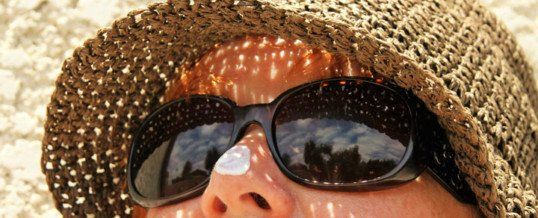
Did you know, that in the US, 50% of all cancer cases occur in the skin. There are many various reasons, ranging from the improper frequency of sunscreen reapplication, to the most recent revelation, that sunscreen performance in general may not be all it’s cracked up to be. WHAT!!?? Think about it, the proof is in the pudding, and statistics speak for themselves. Skin cancer rates continue to rise every year, so clearly the current approach to sun protection is inadequate.
In 2011, the U.S. Food and Drug Administration (FDA) made 2 big changes to labeling requirements for sunscreen manufacturers. First, sunscreens must have an SPF of 15 or higher AND sunscreens must contain ingredients to protect against both UVA (Aging) and UVB (Burning) radiation in order to be labeled “Broad Spectrum.” Additionally, labeling must state, “helps prevent sunburn,” and “if used as directed with other sun protection measures, decreases the risk of skin cancer and early skin aging caused by the sun.” Sunscreens with less than SPF 15 must carry a warning on their label stating, “Skin Cancer/Skin Aging Alert: Spending time in the sun increases your risk of skin cancer and early skin aging. This product has been shown only to help prevent sunburn, not skin cancer or early skin aging.” SPF 30 is the Gold Standard among Dermatologists specializing in the treatment of skin cancer and Aestheticians who work to help clients both prevent skin cancer and skin aging.
The second big change addresses the efficacy of product when used while swimming. Sunscreen manufacturers could no longer use the claim “waterproof” but could instead claim either 40 min. or 80 min. of “water resistance” after conducting FDA approved testing.
UVA and UVB Defined
Most savvy skin care professionals are well aware that UVA rays are the primary cause of premature skin aging, that’s what the “A” stands for. Aging effects of the sun include wrinkles, hyperpigmentation (freckles and other types of dark spots), as well as broken capillaries. We also know that UVB rays cause sunburn, that’s what the “B” stands for. In addition to accelerating the aging process, it is important to note that both types of UV wavelengths contribute to skin cancer.
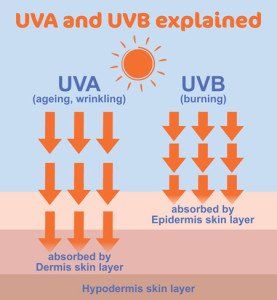
Selecting a Sunscreen
Of the 17 approved filters in the United States, eight are regularly used. Of those eight, only two have shown good protection against UVA rays: zinc oxide (a physical block) and avobenzone (a chemical block not recommended for health reasons, see below). The reality is that until more UV filters are approved by the FDA and better formulations are made, we have limited choices.
Here are some specifics to consider when choosing a sunscreen with adequate UVA and UVB protection:
1. Question soluble (chemical) filters. Chemical UV filters having a Dalton size (unit of measurement) of less than 500 and are absorbed by the skin and reach the blood, potentially causing side effects in humans including hormone imbalance. Typical UV filters used in SPF include: avobenzone, benzophenone (oxybenzone), homosalate, octisalate, octocrylene, 4-methylbenzylidene camphor (enzacamene) and unencapsulated octinoxate. Avobenzone and oxybenzone in particular have been linked to skin sensitivities and dermatitis reactions, not to mention environmental damage to the reefs and water systems.
2. Choose insoluble (physical) filters. Physical filters are safe for humans including those struggling with skin allergies and sensitivities to other sunscreen formulations. Physical filters include zinc oxide, titanium dioxide, encapsulated octinoxate, Mexoryl SX(chemical name: terephthalylidene dicamphor sulfonic acid). The first 2 are the most commonly used in products and recommended by skin health professionals.
3. Look at levels. SPF 30-50 with a UVA Protection Factor of at least 10 is encouraged when picking a sunscreen; the latter is not often published on packaging.
4. Extra SPF Facts: SPF sprays are totally bogus. Don’t waste your money. They can be inhaled, coverage is poor at best and they are typically chemical not physical SPF based products. FDA no longer supports SPF over 50. But I hear you say, I have seen it on the pharmacy shelves! That’s because the large corporations lobbied for a window to continue to sell inventory. This window will be closing over the next few years. Part of the thinking in banning higher SPF products is that people become lax about reapplying as they are lulled into a false sense of security. One last factoid, just because you succeed in not burning by using SPFs, the melanocytes (skin cells that a responsible for creating pigment and sun tan in your skin) are not shut off. They will continue to create melanin which may further create unwanted pigment on your skin.
Additional Protection…a MUST!
Besides using daily, yes, daily, SPF protection from properly formulated sunscreens, there are some other options for safe sun protection, which as you probably gather is a good idea given the limitations of SPFs on the market today. It is still very much an imperfect science.
1. Photoprotective textiles/ clothing. SPF clothing is still a pretty new concept but is a super option when practicing safe sun habits, especially in sun-exposure situations when reapplication of SPF lotions is difficult. Various retailers, sports shops and even Costco, offer hats, shirts and other accessories that provide protection from UV rays.
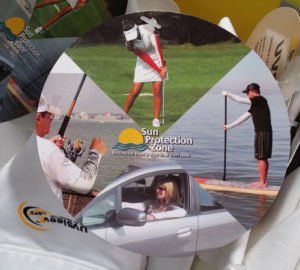
2. Reapply, reapply, reapply. Failure to reapply sunscreen is where most fall short in providing adequate skin protection. Sunscreens must be reapplied every 90 minutes throughout the day during times of sun exposure. Wearing protective clothing, avoiding peak hours (10-4) and seeking out shade are often easier than trying to remember to reapply. Brush On Block now available at SkinRevision is a super easy way to reapply SPF while you are on the go. Small enough to fit in the saddlebag of your horse or motorcycle!
3. Use a topical antioxidant. Adding the right form of vitamin C to a skin care protocol acts like a sunscreen booster. The typical home care regimen I recommend for my patients always incorporates the Lira Clinical Hydra C Serum. When a product containing Vitamin C is formulated correctly, it will penetrate the skin and increase sun protection, compared with using the sunscreen alone. Additionally, antioxidants, such as vitamin C play a crucial role in preventing premature aging in the skin.

Hydra C Serum also protects against infrared (IR) radiation, which is now known to play a role in the degradation of collagen and the breakdown of healthy skin tissue. Vitamin C is a known collagen booster as some of you are familiar from having added on a Vitamin C IV Drip during a MicroNeedling treatment with me.
4. Eye protection. Melanoma often occurs in the eye area as that area is often overlooked during sunscreen application; which is why I love the Lira Clinical BBs and SPF 30 and 50 moisturizer/combination products also from Lira Clinical because they are meant to be used “full face”. Additionally, wearing polarized sunglasses will provide the needed protection. On a recent visit to Dr. Julie Lam, my eye doctor, I was informed I had the beginning of cataracts which are caused by UV exposure. The eyes and skin are very similar in many regards, and the potential of experiencing UV damage is one of them. So throw those fashion glasses out and get some real eye protection! As an aside—don’t forget to treat your lips as well…the Lira Lip Factor SPF 15 is effective and super hydrating, too!
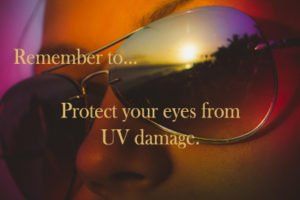
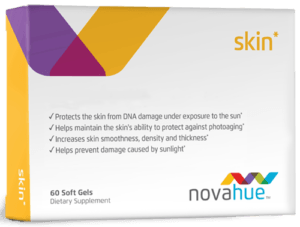
An Informed Decision
So there you have it. Please do not depend on SPF alone. Find practical ways that work for you and your lifestyle to add to daily SPF application to keep you sun safe! Given all we know about the dangers of sun exposure I can confidently say, PALE is the new tan. If I can’t sell you on that, I am now offering professional self-tanning solutions.
For more sun screen facts, check out my other blog Top 5 Facts to Decode and Debunk SPF Hype.




